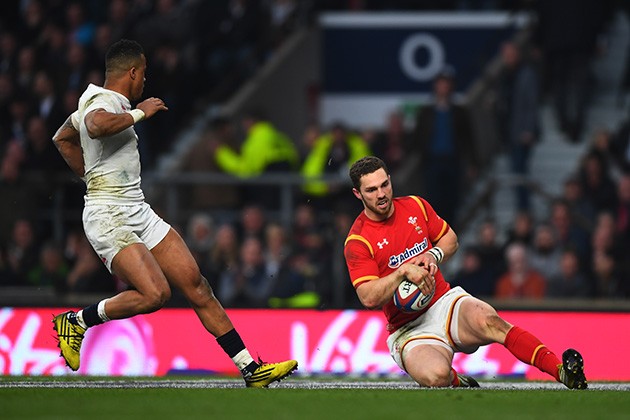They may have lost to England, but there are positives for Wales to take from their attacking game late on
In my recent article comparing England’s results from the Stuart Lancaster and Eddie Jones eras, I asked whether Wales’ attacking transplant would “come good in time for the Twickenham showdown” in this year’s Six Nations.
In the event, it arrived about 12 minutes before the end of a game England were winning comfortably, and it very nearly drove Wales to a last-gasp victory as improbable as their World Cup win over England last September. If George North wasn’t adjudged to have put a foot in touch and Wales had scored their fourth try right at the death, even the scoreline might have been the same, 28-25 to Wales.
The spectacular final weekend of last year’s Six Nations showed how well the likes of England, Wales and Ireland could attack when points difference was the key factor and they had no choice but to give it their all. With the Welshmen 25-7 behind and having hardly fired a shot in anger, exactly the same lucid, driven mindset took over from the 68th minute onwards.
In that 12-minute period until the end of the game, Wales were both ambitious and supremely accurate in attack, finding the soft areas in the England defence I highlighted from the Ireland game.
- They began to find the seams between England forward tacklers suffering from fatigue or replacements not yet adjusted to the speed of the game. Compare Ultan Dillane’s break in the 71st minute of the Ireland match between Dylan Hartley and Dan Cole with Rhys Webb’s tackle break at 68:43 between Cole and Mako Vunipola:
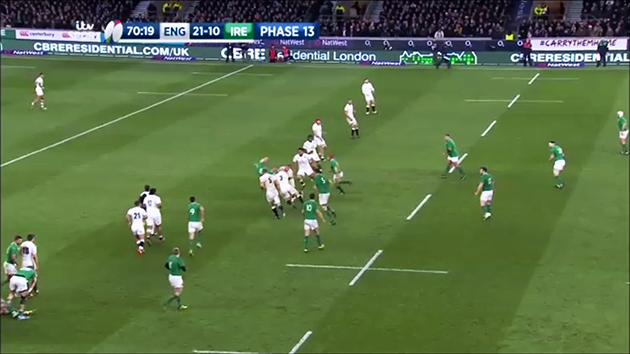
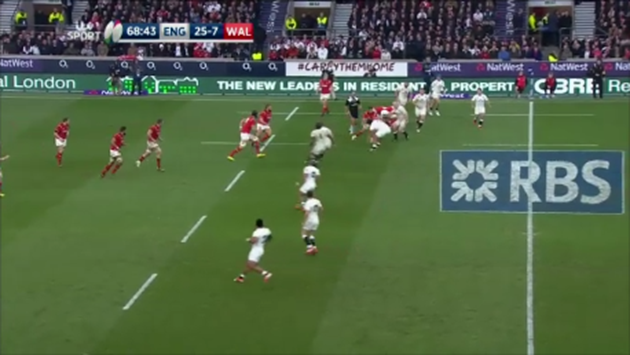
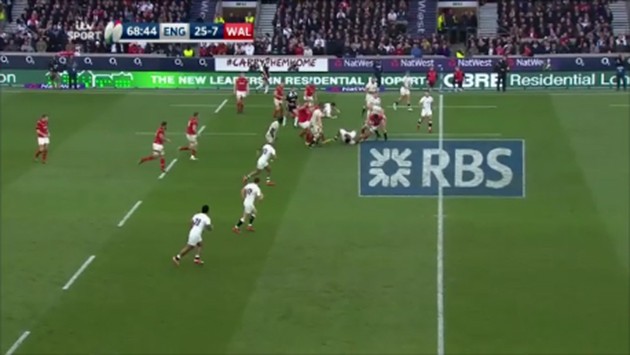 Or Taulupe Faletau’s try-scoring break in the 77th minute between Danny Care and Luke Cowan-Dickie:
Or Taulupe Faletau’s try-scoring break in the 77th minute between Danny Care and Luke Cowan-Dickie:
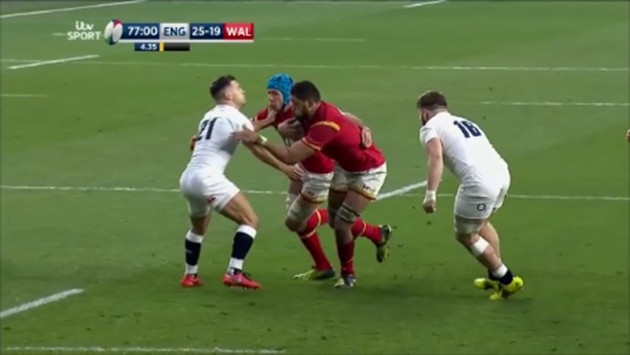
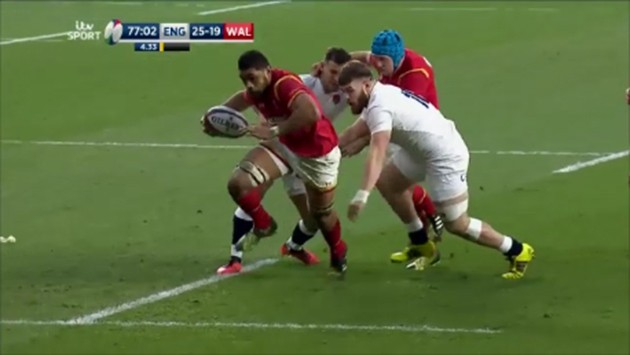
- They began to shift the ball wide-to-wide straight from kick-off returns and found some ‘untidiness’ on the edge of the England defence.
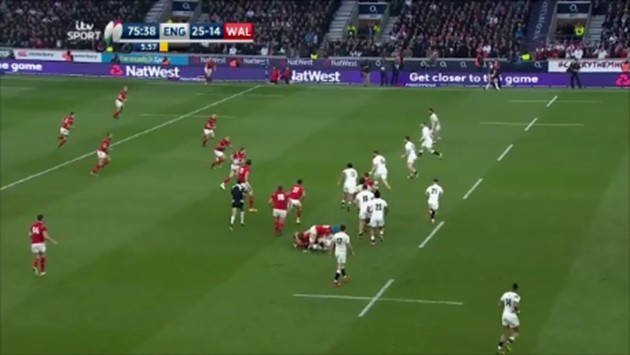

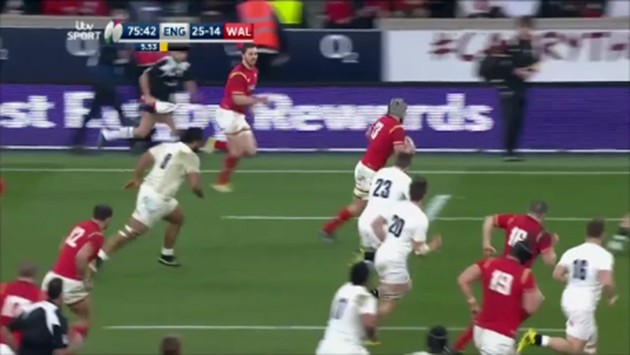
The untidiness consists in England No 8 Billy Vunipola defending on the right edge of the field with replacement centre Elliot Daly inside him – it should be the other way around, with Daly better able to use his speed to close the space to the far sideline down. This is an example of England’s emphasis on line speed working against needs of line integrity.
- They scored one of the best set-piece tries (from scrum) scored in the Six Nations for a number of years, by exploiting the space outside Jonathan Joseph I highlighted against Ireland (from lineout).
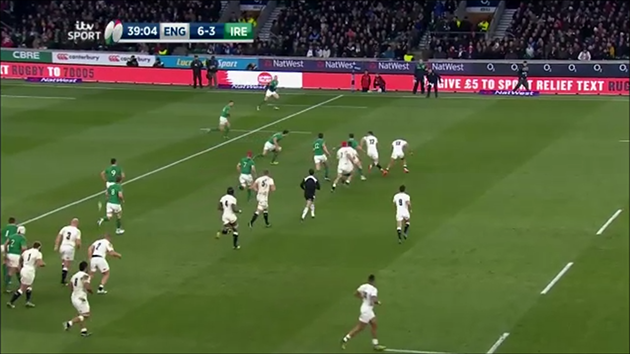
In this example from the end of the first half against Ireland, the England midfield was sucked on to the threat of big Ulsterman Stuart McCloskey and caught defending tight, with no more than three metres separating 10 George Ford and 13 Jonathan Joseph. In this snapshot, JJ is going to have to work hard to fill the channel outside him and link up with wing 14 Jack Nowell.
The Welsh instance comes from a right-side scrum on England’s 40-metre line. When 13 Jonathan Davies appears at second receiver outside Rhys Priestland, the physical threat of Davies and 12 Jamie Roberts on a hard ‘unders’ line outside him has clearly attracted the attention of all three England midfield defenders – 12 Owen Farrell, 20 Manu Tuilagi and 13 Joseph – and they are in their 4m square box:
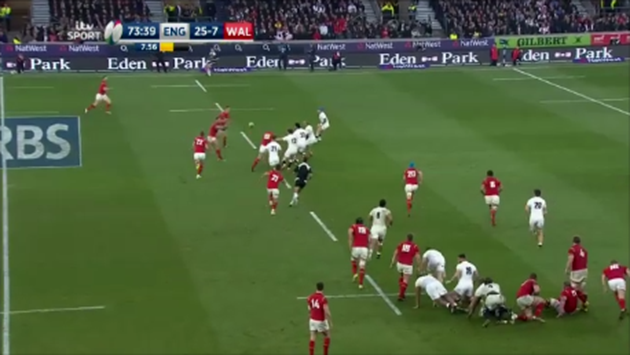
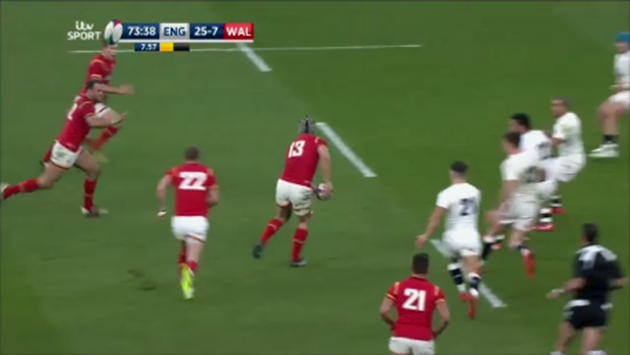
Although Nowell is defending closer to Joseph than he was in the Ireland example because the set-piece is in England’s half, the gap is still wide enough for Wales to exploit. When Davies fires the ball flat past Roberts into the hands of Liam Williams, Joseph is already turned out at a 90° angle towards the far touchline and committed to dragging Williams down well behind the gain-line.
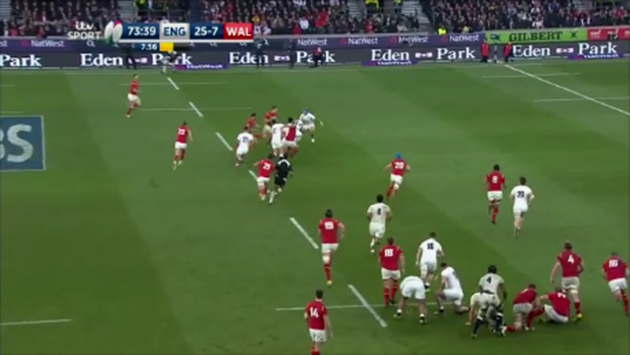
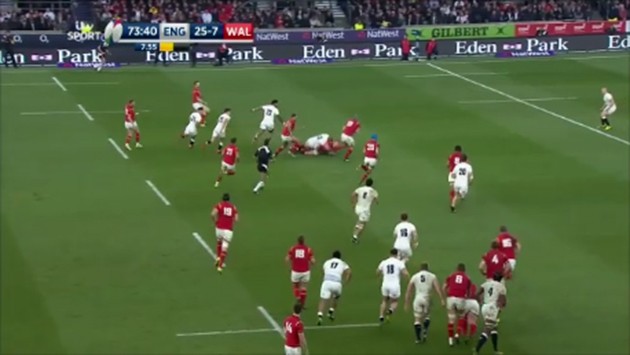
Davies then ensures that he shoulders his way past Owen Farrell after making the pass, to get on the optimal inside support line at 73:39/73:40 and receive the offload back from Williams.
The real beauty of the try is not just in the way the target space has been identified and then accurately exploited, it is also in the design for the support after the break has been made. At 73:40 Davies has Roberts in close support and North available on the outside left; inside him he also has Justin Tipuric (in the blue hat) and Faletau, who are metres ahead of their opposite numbers Jack Clifford and Billy Vunipola.
At 73:42 Davies picks out North but Wales have blanket coverage of all the support lanes, so the try is a certainty.

Conclusions
England will rightly take the most out of this tournament by virtue of winning it, and having dominated threequarters of the match against their closest rivals Wales.
However, Wales will also take a number of positives out of the Six Nations. They have been the most consistent force in Europe for almost a decade, and they have made huge strides in defence, conditioning and mental application under Warren Gatland and Shaun Edwards.
Nonetheless this year’s Six Nations has caught them on the cusp of an uncomfortable transition towards a more attack-oriented mindset, one where the pieces of the jigsaw are still being found and arranged. The 3-1 try count at Twickenham did not save them, but it promises that in future they will continue to prosper rather than fester.
For the latest Rugby World subscription offers, click here.





